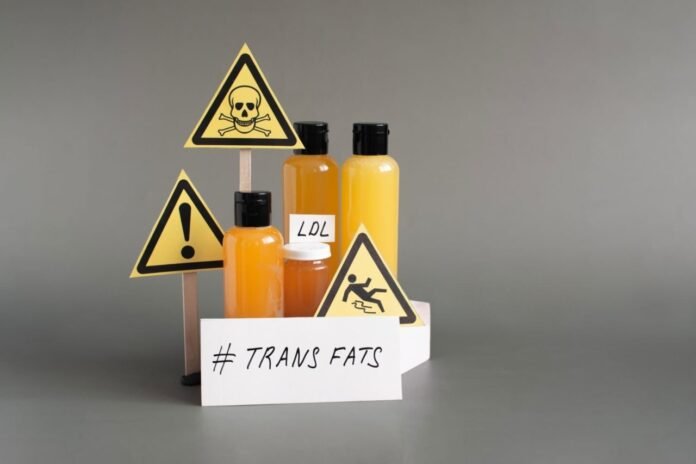Your skin is your body’s largest organ and your first line of defense. But what if the products you trust for your skin health are secretly harming you? Many skincare products contain toxic ingredients that can irritate the skin, disrupt hormones, or lead to long-term health issues.
In this article, we’ll uncover some of the most harmful ingredients found in daily skincare products, why they’re dangerous, and what safer alternatives you should consider. Understanding what goes into your skincare isn’t just smart, it’s essential.
Why You Should Care About Toxic Ingredients in Skincare
What you apply on your skin doesn’t just stay there—it can be absorbed and enter your bloodstream. This is why it’s critical to choose clean skincare products that support rather than sabotage your health.
Toxic ingredients can:
- Trigger allergic reactions
- Disrupt hormone levels
- Cause skin sensitivities and long-term damage
- Affect your immune system over time
Want to learn how to build a safe skincare routine? Check out our guide on How to Choose the Right Products for Your Skin Type.
Harmful Skincare Ingredients to Avoid
Let’s explore some of the most commonly found toxic ingredients in skincare and personal care products.
1. Parabens (Methylparaben, Propylparaben, etc.)
Why it’s used: Parabens are preservatives used to prevent the growth of mold and bacteria.
Why it’s harmful: Parabens can mimic estrogen in the body, potentially disrupting hormonal balance. Studies have linked them to breast cancer and reproductive issues.
Look out for: Ingredients ending in -paraben
Alternative: Products preserved with natural alternatives like sodium benzoate or potassium sorbate.
2. Fragrance/Parfum
Why it’s used: To give products a pleasant scent.
Why it’s harmful: “Fragrance” is a blanket term that may hide dozens of unknown chemicals. Many of these can cause allergic reactions, headaches, and skin irritation.
Look out for: Words like fragrance, parfum, or aroma
Alternative: Choose products labeled “fragrance-free” or scented with essential oils.
3. Phthalates
Why it’s used: Phthalates help products stick to your skin and make fragrances last longer.
Why it’s harmful: Known as endocrine disruptors, phthalates have been linked to fertility problems, developmental issues in children, and certain cancers.
Look out for: DBP, DEHP, DEP, or generic “fragrance”
Alternative: Choose certified phthalate-free products.
4. Sodium Lauryl Sulfate (SLS) and Sodium Laureth Sulfate (SLES)
Why it’s used: These surfactants create foamy lather in cleansers and shampoos.
Why it’s harmful: SLS/SLES can strip natural oils, causing dryness, irritation, and triggering eczema or acne in sensitive skin.
Look out for: Sodium lauryl sulfate, sodium laureth sulfate
Alternative: Use sulfate-free cleansers with coconut-based surfactants.
5. Formaldehyde and Formaldehyde-Releasing Agents
Why it’s used: Used as a preservative to kill bacteria.
Why it’s harmful: Formaldehyde is a known carcinogen and can also cause skin allergies and irritation.
Look out for: DMDM Hydantoin, Imidazolidinyl Urea, Quaternium-15
Alternative: Products with natural preservatives or certified organic skincare.
6. Mineral Oil and Petrolatum
Why it’s used: Creates a barrier to lock in moisture.
Why it’s harmful: Derived from petroleum, it may be contaminated with carcinogenic impurities if not properly refined.
Look out for: Petrolatum, paraffinum liquidum, mineral oil
Alternative: Try plant-based oils like jojoba, rosehip, or almond oil.
7. Oxybenzone (in Sunscreens)
Why it’s used: A chemical sunscreen ingredient to absorb UV rays.
Why it’s harmful: Linked to hormonal disruption and coral reef damage. Can cause skin allergies in sensitive individuals.
Look out for: Oxybenzone, benzophenone-3
Alternative: Choose mineral sunscreens with zinc oxide or titanium dioxide.
8. Triclosan
Why it’s used: As an antibacterial agent in cleansers and hand soaps.
Why it’s harmful: Can contribute to antibiotic resistance, hormone disruption, and environmental harm.
Look out for: Triclosan, triclocarban
Alternative: Natural antibacterial agents like tea tree oil or witch hazel.
How to Check If Your Skincare Is Safe
Reading labels can be overwhelming. Here are a few steps to make it easier:
- Use ingredient-checking apps like EWG’s Skin Deep or Think Dirty.
- Avoid products with long chemical names unless you’re sure of their safety.
- Look for certifications like USDA Organic, COSMOS, or EWG Verified.
Explore our post on Clean Beauty vs. Natural Skincare: What’s the Difference? to understand more about safe product choices.
Final Thoughts: Less is More When It Comes to Ingredients
Taking care of your skin shouldn’t come at the cost of your health. By avoiding toxic ingredients and choosing cleaner options, you’re not only protecting your skin, you’re investing in your long-term wellness.
It’s time to become an ingredient-conscious consumer. Because when you know better, you choose better.



